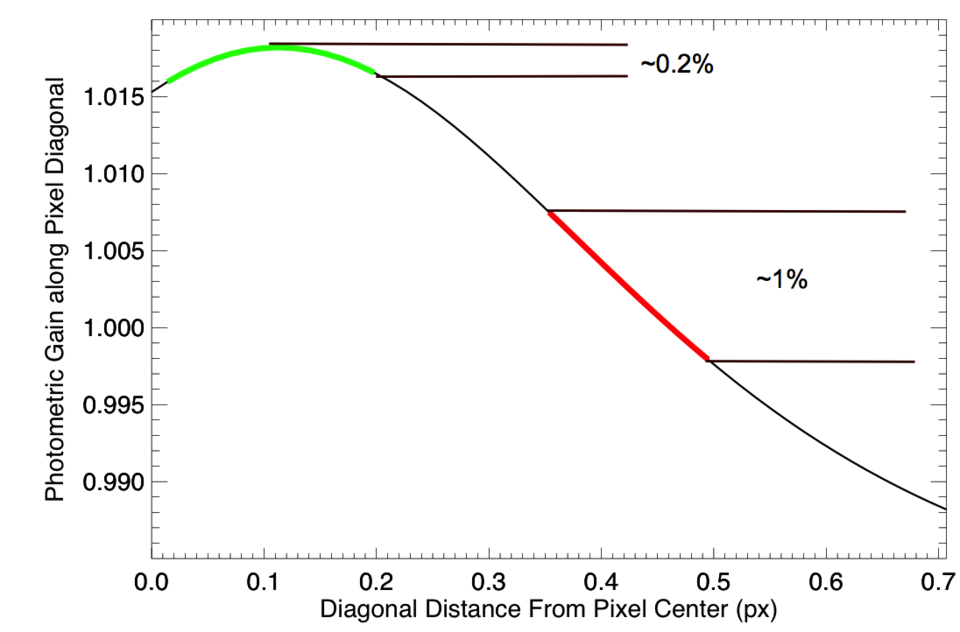IRAC High Precision Photometry
Repeatable Pointing
PCRS Peak-Up and the "Sweet Spot"
The first step towards reducing correlated noise is to localize the sub-pixel position of a point source on an area of minimal gain variation. We have defined the "Sweet Spot" region of each array to be the 0.5-pixel square surrounding the point of maximum response in the Subarray Field-of-View center pixel (pixel [15,15] in [0,0]-based coordinates). Specifically the sweet spot peak is at [15.198, 15.020] in ch1 and [15.120, 15.085] in ch2.
PCRS peak up uses the Spitzer Pointing Calibration Reference Sensor (PCRS) to repeatedly position a target to within 0.1 IRAC pixels (on-target peakup) of the Sweet Spot center. The technique is more precise when the target itself is used as the peak-up source, but is still useful when a separate "guide star" is used. See PCRS Peak-Up Results for more information.
Why this Sweet Spot?
As shown below, the peak pixel response in CH2 is not at the center of the pixel. Also, note the 0.2% variation in gain around this peak for a typical pointing wobble plus drift of about 0.2 px, whereas the same motion would result in 1% gain variations closer to the corner of the pixel. Keeping a target within the Sweet Spot minimizes correlated noise.

Furthermore, the "Sweet Spot" of each array has been targeted by the IRAC team as a region for special calibration. Many thousands of photometric measurements of non-variable stars have been made in an effort to build a high spatial resolution, low noise map of intrapixel gain. See Mapping Intrapixel Gain for more information. Kernel regression techniques can be used to reduce correlated noise, and provide an independent check on other noise reduction techniques.